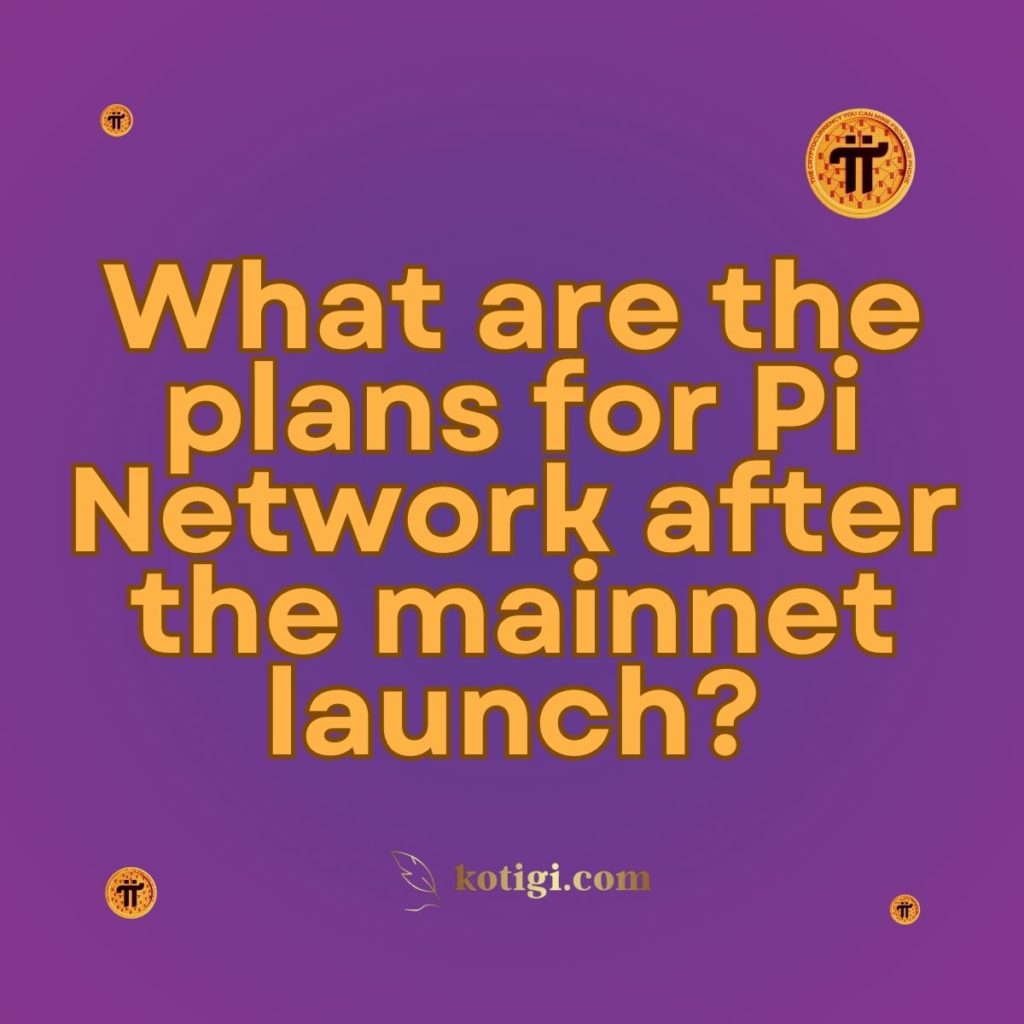
What are the plans for Pi Network after the mainnet launch?
After the mainnet launch, Pi Network’s journey is expected to enter a new and exciting phase, focusing on expanding its ecosystem, enhancing its technology, and increasing the utility and value of the Pi cryptocurrency. Here’s a look at the plans and potential developments for Pi Network post-mainnet launch:
1. Building a Comprehensive Ecosystem
1.1. Decentralized Applications (dApps):
One of the primary goals after the mainnet launch is to foster the development of decentralized applications (dApps) on the Pi Network. These dApps will utilize Pi as their native currency, creating real-world use cases that drive demand and increase the coin’s value. Developers will be encouraged to build applications in various domains such as finance, social media, gaming, and e-commerce, contributing to a vibrant ecosystem.
1.2. Marketplace Integration:
Pi Network aims to establish marketplaces where Pi coins can be used to buy goods and services. This integration will allow users to spend their Pi in real-world transactions, increasing its utility and encouraging wider adoption. Partnerships with merchants and service providers will be crucial in realizing this vision.
2. Exchange Listings and Liquidity
2.1. Listing on Cryptocurrency Exchanges:
Post-mainnet, one of the significant milestones will be listing Pi on major cryptocurrency exchanges. This step will enable users to trade Pi for other cryptocurrencies or fiat currencies, providing liquidity and establishing a market value for Pi. Exchange listings are expected to bring Pi into the broader crypto market, attracting traders and investors.
2.2. Liquidity Pools and DeFi Integration:
To enhance liquidity, Pi Network may explore integration with decentralized finance (DeFi) platforms. This could include creating liquidity pools where users can stake their Pi to earn rewards or participate in decentralized exchanges (DEXs). Such integrations would not only boost liquidity but also expand the use cases for Pi in the DeFi ecosystem.
3. Enhancing Security and Decentralization
3.1. Strengthening Network Security:
As Pi Network grows, maintaining and enhancing security will be paramount. This includes continuous security audits, monitoring for potential vulnerabilities, and implementing updates to protect against threats. Ensuring the network’s security will be critical in building trust and protecting users’ assets.
3.2. Expanding Decentralization:
After the mainnet launch, Pi Network will likely focus on further decentralizing its infrastructure. This includes increasing the number of nodes operated by community members, reducing reliance on central servers, and empowering the community to participate in network governance. Greater decentralization will enhance the network’s resilience and align with the core principles of blockchain technology.
4. Community Engagement and Governance
4.1. Developing a Governance Model:
Pi Network plans to implement a governance model that allows its community members to have a say in the network’s future direction. This could involve the creation of a decentralized autonomous organization (DAO) where Pi holders can vote on proposals, make decisions about network upgrades, and influence the development of the ecosystem.
4.2. Continued Community Growth:
Engaging the existing user base and attracting new members will be essential. Pi Network aims to maintain an active and engaged community through education, incentives, and opportunities for participation in governance. The strength of the community will be a key driver of Pi Network’s success.
5. Expanding Global Adoption
5.1. Increasing User Adoption:
Post-mainnet, Pi Network will focus on expanding its user base, particularly in regions with limited access to traditional financial services. By providing an easy-to-use mobile platform for earning and transacting in cryptocurrency, Pi Network aims to drive global adoption and increase financial inclusion.
5.2. Strategic Partnerships:
To achieve broader adoption, Pi Network plans to form strategic partnerships with businesses, financial institutions, and other blockchain projects. These partnerships could facilitate the integration of Pi into various sectors, including e-commerce, remittances, and digital identity, thereby increasing its utility and reach.
6. Technological Advancements
6.1. Continuous Innovation:
Pi Network will need to continuously innovate to remain competitive in the rapidly evolving cryptocurrency space. This could involve upgrades to the consensus mechanism, improvements in scalability, and the development of new features that enhance the user experience. Staying at the forefront of blockchain technology will be critical for long-term success.
6.2. Expanding Use Cases:
As the ecosystem grows, Pi Network will explore new use cases for Pi coins. This could include integrations with smart contracts, decentralized finance (DeFi) applications, and other emerging technologies. Expanding the range of use cases will increase the demand for Pi and contribute to its value.
Conclusion
The future plans for Pi Network after the mainnet launch are ambitious and focused on building a robust ecosystem, enhancing security, and driving global adoption. By developing decentralized applications, securing exchange listings, and engaging the community in governance, Pi Network aims to establish itself as a significant player in the cryptocurrency world. The success of these initiatives will depend on continuous innovation, strategic partnerships, and the active participation of its growing user base.





